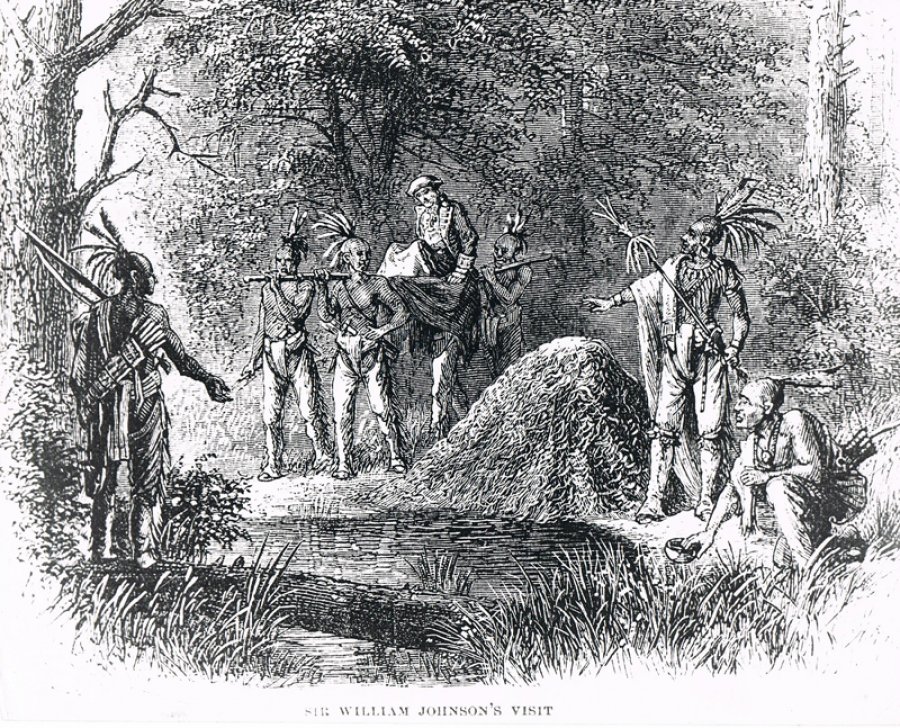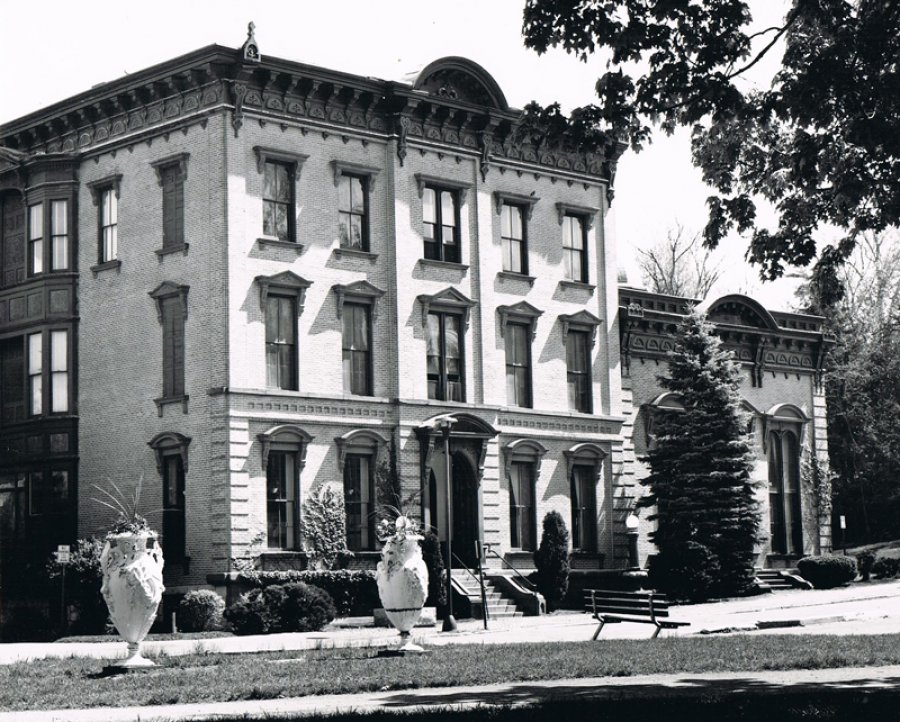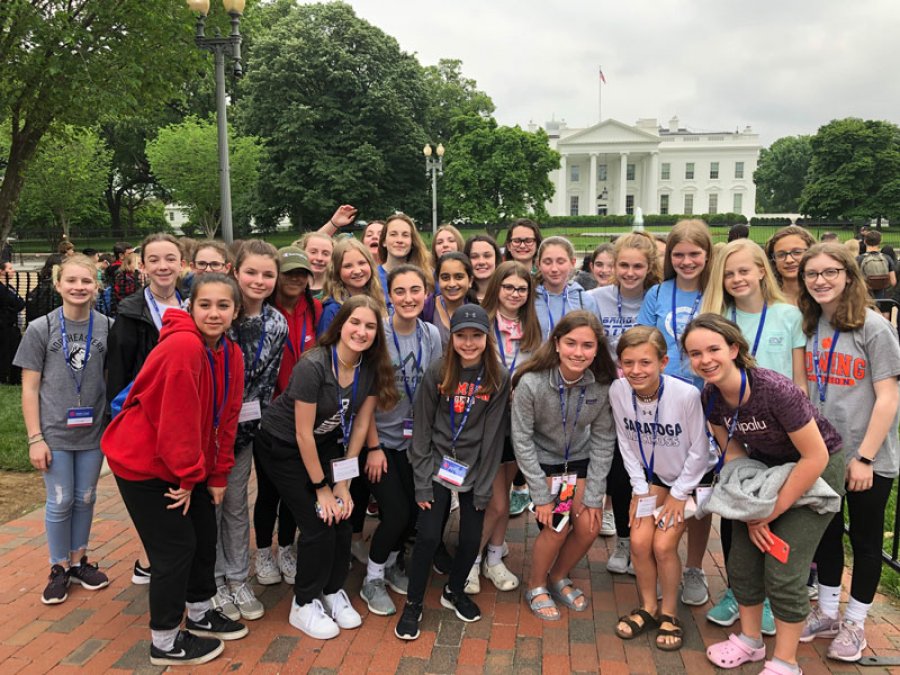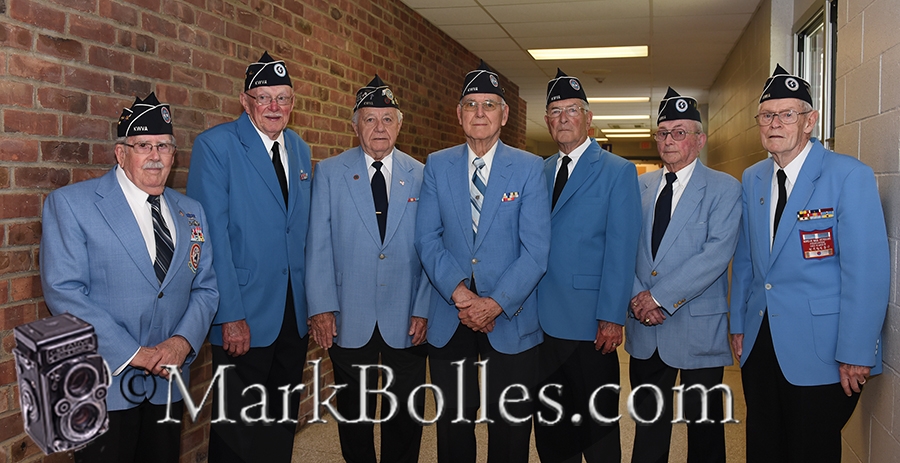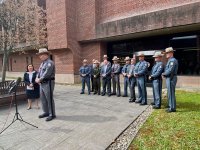Displaying items by tag: history
History of Saratoga - High Rock Spring
Most new residents and visitors to the city probably better know the location of the High Rock Spring as the area near the Farmers’ Market, or the area near the 9/11 Memorial “Tempered by Memory” on High Rock Avenue in Saratoga Springs. In the 1800’s the area was all about the popular High Rock Spring and history has shown that it was the founding location of the city.
The Mohawk were the indigenous tribe of Native Americans for hundreds of years in the area of today’s Saratoga Springs. They spent summers fishing. hunting and growing crops to provide a food supply to get their tribe through the harsh winters of upstate New York. While in the area they discovered the natural mineral springs, used them extensively and guarded their location.
Sir William Johnson is thought to be the first European to visit the High Rock spring in 1771, when in poor health, was brought to the spring for a four-day visit. Johnson was the Superintendent for Indian Affairs in North America for the British Crown. Sir William lived among the Mohawk and had even married the chief’s sister, Molly Brant. Because of this strong bond with the tribe, when Johnson showed signs of declining health the Mohawk carried him on a litter to reveal the location of their deeply guarded secret spring at High Rock. After a brief four-day stay he found bathing and drinking the water made for a positive change in his health, as he was able to walk most of the way back to his home in the Mohawk Valley. After his visit, Sir William sent letters to many friends describing the healing effects of the waters and soon settlers demanded access to this guarded location. Soon a deal was brokered with the Mohawk and the area was opened for settlement by Europeans.
After a few early short-term settlers, Alexander Bryan became the village’s first permanent settler when he began operating a tavern and boarding house in the High Rock area near what today is the Olde Bryan Inn. The area around the High Rock and Alexander Bryan’s Tavern saw the construction of the first cluster of structures built in the early village and was known as the Upper Village. Soon another area began to develop a short distant to the south in the area near the present-day Congress Spring. In 1802 Gideon Putnam and his wife Doanda, constructed and operated the first hotel in the village on the northwest corner of Broadway and Congress Street. This new area became known as the Lower Village. Soon Saratoga Springs began to grow, and the two villages grew into one Saratoga Springs.
As Saratoga Springs flourished in the 1800’s the number of mineral springs grew from four that were original and naturally occurring, to 203 mostly drilled springs. By 1908, overuse of most of the many springs by mechanical pumping left the High Rock Spring dry. The High Rock Spring had stopped flowing and the founding spot of the village would stay dry until it was re-drilled in 2015.
In celebration of the centennial of the village becoming a city in 1915, a committee worked to re-drill and bring back to life the very important High Rock Spring. Two big players helped to complete the project. First was the very talented well drillers of Hawk Drilling who donated many hours of labor and materials to reach water at 442 feet below the surface. Then the talents of the Saratoga Springs Department of Public Works under the direction of Commissioner Skip Scirocco provided the site work and plumbing for the new fountain. This allowed the water to exit the ground in two spots, the fountain and the original mineral “cone” that had provided water for use for hundreds of years.
This summer, plan to visit the High Rock Spring to further learn about the early history of Saratoga Springs as well as to enjoy the water from that spring and nearby springs Peerless and Governor. Our city slogan has it right when it states; “Health, History and Horses.” It all began with Health and the mineral springs, especially the High Rock.
History of Saratoga - Canfield Casino
In the year 2019, the silhouette of the many grand hotels and some of the Victorian architecture that was the trademark of the city in the 1800’s is missing. We are fortunate to still have a wonderful example of the architectural style offered in those magical years in the form of the Canfield Casino, located in Congress Park.
What is known today as the Canfield Casino opened in the summer of 1870 at a construction cost of $190,000, known originally as the “Saratoga Clubhouse” under the management of John Morrissey. It was always Morrissey’s intent to use the beautiful venue as a gambling casino, but since gambling was illegal in the city at the time, Morrissey presented the space as a men’s club. In order to ensure that the wealthy would be impressed with the building, Morrissey used the top interior designers of the time, the Herter Brothers of NYC and Mitchell Vance was asked to do the lighting. In 1870 as the top design company, the Herter Brothers also did the White House and many of the homes of the wealthy in America. Today the Canfield Casino is one of only three remaining commercial structures in the country designed by the Herter Brothers.
Admission to the building was to members who paid a seasonal membership fee of $200 per person. Gambling was always limited to men that were non-residents of Saratoga Springs. In that era women of high social status generally did not wish to be seen in gambling spaces, and the exclusion of locals prevented anyone from losing money that might return to protest the operation. A truce was made with local religious leaders by suspending gambling on Sundays. Morrissey also returned money to the community at the end of each summer season by donating some of his profits to churches and non-profits in the city.
At the conclusion of the first summer the experiment proved to be a monetary success as well as a hit with locals, so plans were made to build additional gaming space in the form of a parlor that would be available for the summer of 1871. In May of 1878 John Morrissey died of illness on the second floor of the Adelphi Hotel, and partners Reid and Spencer operated the venue until it was purchased by New York City gambler Richard Canfield in 1894 for $250,000. Canfield raised the elegance of the building by adding the ballroom, which operated as a restaurant, and the Italian Gardens in the park for about $800,000.
Anti-gambling sentiments both locally and nationally started to pressure the closure of the Canfield Casino in the early 1900’s. Under intense pressure Richard Canfield finally put the Casino up for sale. Finally, with no purchase offers, the City of Saratoga Springs bought the building and surrounding land in the park for a bargain price of $150,000 in 1911. This iconic building is still owned by the city today and is continually updated and repaired by the Saratoga Springs Department of Public Works with great care and understanding of its importance in the history of the city.
In the summer of 2020, the Canfield Casino will be celebrating its 150th anniversary of being a notable location and jewel of the city. Today, daily tours of the building are offered by the staff of the Saratoga Springs History Museum that provide additional facts on the structure as well as a glimpse into the famed history of Saratoga. In 2010 another twist was added when the Canfield Casino was investigated by the TV show “Ghost Hunters” to explain frequent observed paranormal activity. Since that time, ghost tours have been offered on Monday, Wednesday and Friday during the summer at 11 a.m.
As you plan your summer activities, put a stop at the Canfield Casino on your list to enjoy the true feel of Saratoga Springs history.
Maple Avenue 8th Grade Students First Trip to Nation’s Capital
SARATOGA SPRINGS — Three hundred students, eight buses, and five hours of driving led to an educational experience of a lifetime for Maple Avenue Middle School’s eighth graders.
Putting a Face to History: Korean War Veterans Speak to Saratoga Students
SARATOGA SPRINGS – History came alive recently for students at Saratoga Springs High School (SSHS).
In the intimate setting of the SSHS teaching auditorium, a little over three classes worth of local students gathered for an assembly on May 24 where seven members of the Adirondack Chapter of the Korean War Veterans Association came to share stories from their times serving their country. In attendance to share their stories were Bruce Blackie, Roger Calkins, Eugene Slavin, Paul O’Keefe, Edward Bushey, William Reid, and Robert Garland. After each speaker rose to give the audience a salute, Blackie spoke first, introducing the group’s intention to shed a light on what many have termed the “Forgotten War.”
“What we wanna do is put a personal face on what you read in the history books,” Blackie said. He continued, noting the historically significant facets of the Korean War: it was the first war in American history with no formal congressional declaration to mark the country’s entrance into it, and it ended not with a victory on either side, but with a ceasefire that holds to this day.
Calkins spoke next, first noting how each speaker had lived through WWII, which ended just five years before the start of the Korean War, and how at the time the feeling of peace was such that few thought that it would ever end, let alone so soon after. He then took students through the shape of the lands controlled by the North and the South over the course of three years, starting with the divisions of the country made by the United States and the Soviet Union after WWII, see-sawing back and forth from Northern to Southern control, before finally ending with the current dividing line at the 38th Parallel, currently known as the Korean Demilitarized Zone.
“It all happened very fast,” Calkins said.
O’Keefe spoke next, bringing a much more personal angle to his talk, telling the story of how he came to be involved in the war, and how things went for himself and his friends afterwards. O’Keefe graduated from Mechanicville High School only four days before the war began. Alongside himself, a good friend of his from school, Raymond Waldron, was also drafted, and he told the audience to remember that name, as he would be coming back to it. Before basic training, O’Keefe had never held any sort of weapon before.
“Not even a BB gun,” O’Keefe said.
Speaking of his time on the battlefield, he noted how the life of a soldier felt like being an animal.
“Your home is now a hole in the ground,” he said, telling the students about foxholes.
Coming back to his friend Waldron, O’Keefe told the story of how surprised he was to see a friend from home in the army with himself. Later on, he told students about how Waldron went on to attend Ithaca College, and eventually became a coach and respected athletic director at SSHS, despite at one time being among their bitter rivals on the sports team in Mechanicville. Waldron’s esteem within the community was so great that a street was named after him, Coach Waldron Way, just off of Washington Street in Saratoga Springs.
O’Keefe concluded his portion by highlighting the some of the graduating Blue Streaks who would be going on to attend military academies in the fall, including student athletes Hunter Choy and Will Navin, who were in attendance.
After each speaker had told their stories, they opened up the floor for student questions. Choy and Navin each came with the kinds of specific questions befitting soon-to-be members of the Armed Forces. Choy asked about the tactics employed by the forces they interacted with in Korea, to which many of the men recalled the overwhelming numbers mobilized by the Chinese, who fought on the side of North Korea alongside the Soviet Union. Navin wanted to know about the public’s perceptions of the war at the time, which according to the men was something like ignorance, as many people seemed unaware of the war. Upon returning home from combat, a few speakers recalled how many people at home were not aware that they had been gone for so long on account of the war.
Along with sharing stories from their times in the service, the speakers also stressed how important it is to honor those servicemen and women who were not lucky enough to come back, an appropriate message so close to Memorial Day.
“It is a day to remember those who never got to take their uniforms off,” O’Keefe said about the upcoming day of remembrance.
All photos by www.photoandgraphic.com.




 How to resolve AdBlock issue?
How to resolve AdBlock issue? 